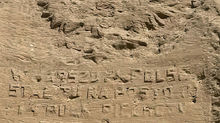Captain Sidney Philip Smith RFC / RAF
- Steve Johnson

- Aug 12, 2021
- 2 min read
Updated: Jul 10
There’s a lot more to this crash photograph than meets the eye. Twenty-year-old 2nd Lt Philip Smith transferred from the Army Service Corps into the Royal Flying Corps in March 1916 and only three months later on the 22nd June was posted overseas to 6 Squadron as a newly-qualified pilot. Philip’s first two weeks on active service were almost his last, an all too frequent fate for novice pilots during WW1. Four days after arriving at the squadron, he misjudged landing back at Abeele after a practice flight and ran into a ditch (see attached photo). His BE2c was quickly repaired and he was back in the air, but six days later, whilst leaving on a mission in the same aircraft with his observer, Captain T R Duff, the engine failed on take-off and they came to grief just outside Abeele. No-one was injured in the crash and the BE2c was put back together again, remaining on charge with 6 Squadron until it was flown back to England “time-expired” in October 1916.
Over the next few months, Philip Smith became a skilled pilot, with many of his exploits mentioned in 6 Squadron’s operational diary, before he was promoted to Captain and flight commander in January 1917. He even succeeded in shooting down an Albatros DII, despite flying an obsolete BE2d two-seater. His time with 6 Squadron was cut short on the 1st May 1917 when his RE8 was attacked by five red Albatros scouts. With the help of another 6 Squadron RE8 that came to his aid, he managed to land his damaged aircraft, despite bullet wounds to his right foot. Philip Smith returned to England on a hospital ship to recuperate, but it wasn’t until March 1918 that he was able to resume active service as a pilot. This time, instead of flying a two-seater reconnaissance bomber (the RE8), he joined 46 Squadron at the Filescamp Farm aerodrome in France, flying the Sopwith Camel fighter. In the short time he was with 46 squadron, Captain Sidney Philip Smith DSO was credited with a further four aerial victories, officially making him a flying ‘Ace’. Sadly, during a low patrol on the 6th April 1918, Philip Smith’s aircraft was shot down in flames, becoming the 76th victim of Rittmeister Manfred von Richthofen. Philip Smith’s body was never found.














































Comments